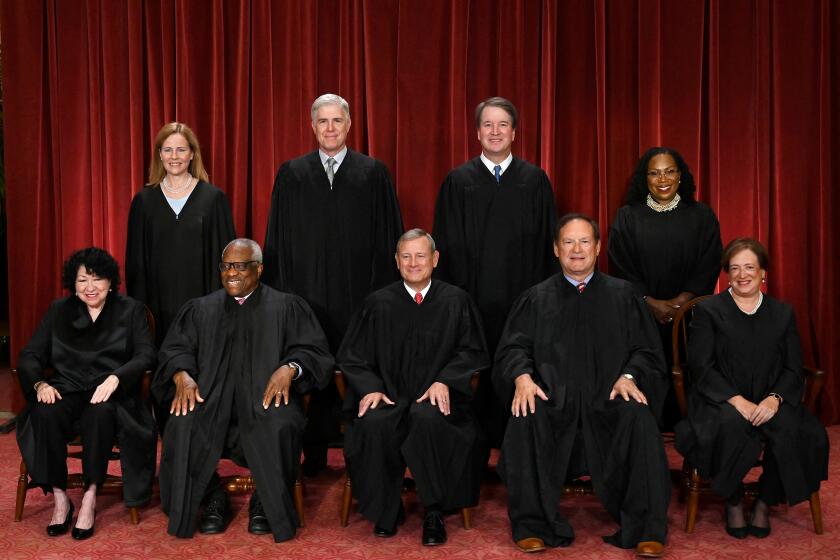The Term Limits Follies
- Share via
Just as nature abhors a vacuum, the body politic hates uncertainty. And massive uncertainty has been created by a federal judge’s ruling that California’s 1990 legislative term limits law is unconstitutionally severe.
This situation is driving many in Sacramento into unusual camps. Some Democrats who have always opposed term limits now are bent on reinstating them-quickly, in time for the 1998 elections. But Republican Gov. Pete Wilson, a term limits zealot in 1990, has said there’s no rush. Lt the judicial appeal process run its course, he says.
What gives? Well, politics, of course.
Wilson’s stand, if it holds, probably will leave the present term limits in place for 1998, since the judge stayed the ruling pending appeal. This would be to the GOP’s advantage because eight of the 11 state senators who will be “termed out” next year are Democrats.
The Democratic leadership talks of placing a new constitutional amendment on the ballot in a special election to be called by the governor this fall. That would start the term limits clock ticking all over again, allowing the lawmakers who would otherwise be “termed out” to seek reelection. Included would be the Democratic leaders of both houses.
One theory is that Wilson might go along with a special election on a new term limits plan if he got something in return that he really wanted-for instance, a measure to create an independent reapportionment commission that would draw new legislative congressional district lines after each census. The proposal for a new term limits plan linked to a redistricting commission merits consideration. In the Legislature’s hands, redistricting is little more than raw power politics.
A danger of a quick fix, however, is that legislative leaders might be tempted to concentrate on their personal political longevity rather than the long-term good of the state. This might happen if they made a deal with Republicans. The GOP would agree to a vote this fall on a new term limits measure, but only if it retained the same limits imposed by voters when they approved Proposition 140 in 1990-three two-year terms in the Assembly and two four-year terms in the Senate.
That would extend the political careers of incumbents but also would saddle future law-makers and the state with the current term limits, which have already proved to be unrealistically short, especially in the Assembly.
Term limits have become part of the California political landscape. There is no turning back now. But there is considerable argument for longer terms. Following more than a year of deliberation, the California Constitution Revision Commission concluded that the state’s term limits did not provide the stability needed for effective lawmaking. The commission proposed that all legislators be allowed a maximum of three four-year terms, with terms staggered so that half of the seats in each house would be up for a vote every two years. It’s a good starting point for negotiations.










